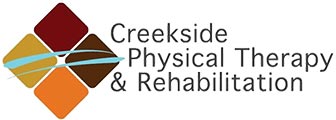Neck pain is a prevalent and cumbersome condition that many of us, upwards of 70% of people, will experience at some point in their life (4). Fortunately, many of these cases of pain do not significantly interfere with normal daily activities. Even so, the likelihood of pain returning at some point in time is quite high, as there is a correlation between previous bouts of neck or low back pain and having neck pain in the future (3). Despite this, there are many things you can do to to prevent or reduce your risk of injury.
Anatomy
.png) The cervical spine is comprised of 7 vertebrae that are supported by many muscles, ligaments, and spaced with intervertebral discs. Damage to any of these structures by way of strained muscles, ligament sprains, or herniation of the intervertebral discs can lead to pain and dysfunction. Other non-traumatic causes of pain may include bone spurs and degeneration of the joint spaces.
The cervical spine is comprised of 7 vertebrae that are supported by many muscles, ligaments, and spaced with intervertebral discs. Damage to any of these structures by way of strained muscles, ligament sprains, or herniation of the intervertebral discs can lead to pain and dysfunction. Other non-traumatic causes of pain may include bone spurs and degeneration of the joint spaces.
Traumatic injury usually is the result of sudden acceleration/deceleration known as whiplash. Most often these injuries are sustained in motor vehicle accidents, but can also happen through falls and sports injuries. Prognosis on these injuries varies widely, but in general increased symptom duration is correlated with the development of chronic pain (2). Symptoms of whiplash include headaches, dizziness, and neck pain (3).
Aside from direct trauma to the neck, there are many other factors that can precipitate neck pain, including increased age, stress, anxiety and depression, computer and cell phone use, lack of physical activity, and poor sleep (3,4).
What can you do?
Addressing these underlying risk factors is one important way to reduce the likelihood of pain. This may including addressing ergonomic changes at your work station or considering posture when watching television or using a mobile device. For more information on posture, follow this link.
Once we have pain, several steps can be taken to address it. Exercise and manual therapy interventions can be performed to decrease pain according to research. Manual therapy has been shown to decrease pain faster, but exercise has been shown to improve long term pain and reduce the likelihood of chronic pain (1). This is thought to be in part due to the association of chronic pain and the alteration of proprioception (awareness) of the neck muscles that play a role in maintaining joint positioning in the neck (1).
How we can Help
If you do happen to develop neck pain, contacting the physical therapists at Creekside Physical Therapy can help decrease your neck pain and develop a exercise program that will prevent the pain from returning. This may include, but not limited to:.png)
- Manual therapy interventions such as joint mobilization to increase joint mobility, soft tissue mobilization to decrease restrictions in the muscles of the cervical spine, and other modalities including instrument assisted soft tissue mobilization (IASTM) and myofascial decompression (MFD) to improve comfort with movement and mobility.
- Exercises, such as deep neck flexor strengthening, stretching, thoracic mobility and strengthening, and coordination and proprioception exercises may all be used to improve strength and tolerance for activity and movement.
- Education is an important part of your visit and may include postural cues, ergonomic recommendations, and information regarding healthy lifestyle choices, all with consideration to each patient’s unique presentation and circumstances.
Creekside Physical Therapy Has 3 Convenient Locations in Portland, Oregon
Message us now to get scheduled with one of our Physical Therapists at any of our locations:
Tigard - Oleson: 9115 SW Oleson Rd, Ste. #206 Portland, Oregon, 97223
Tigard - Locust: 9445 S Locust St., Tigard, Oregon, 97223
Cedar Mill: 12400 NW Cornell Rd, Ste. #200 Portland, Oregon, 97229
References
- Bernal-Utrera C, Gonzalez-Gerez JJ, Anarte-Lazo E, Rodriguez-Blanco C. Manual therapy versus therapeutic exercise in non-specific chronic neck pain: a randomized controlled trial. Trials. 2020 Jul 28;21(1):682. doi: 10.1186/s13063-020-04610-w. PMID: 32723399; PMCID: PMC7385865.
- Binder A. The diagnosis and treatment of nonspecific neck pain and whiplash. Eura Medicophys. 2007 Mar;43(1):79-89. PMID: 17369782.
- Kazeminasab S, Nejadghaderi SA, Amiri P, Pourfathi H, Araj-Khodaei M, Sullman MJM, Kolahi AA, Safiri S. Neck pain: global epidemiology, trends and risk factors. BMC Musculoskelet Disord. 2022 Jan 3;23(1):26. doi: 10.1186/s12891-021-04957-4. PMID: 34980079; PMCID: PMC8725362.
- Verhagen AP. Physiotherapy management of neck pain. J Physiother. 2021 Jan;67(1):5-11. doi: 10.1016/j.jphys.2020.12.005. Epub 2020 Dec 24. PMID: 33358545.

